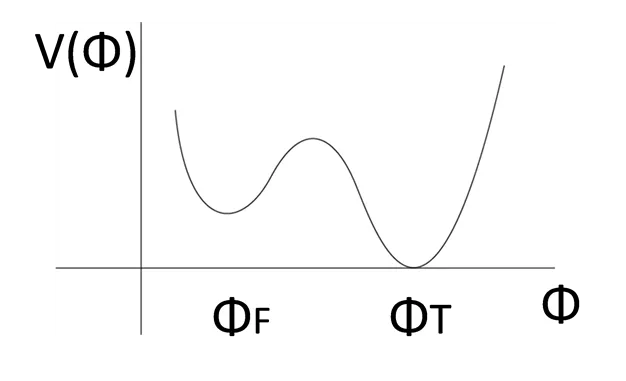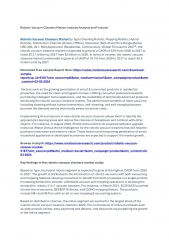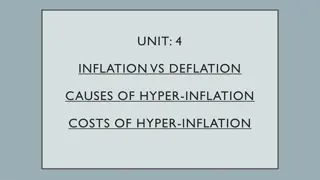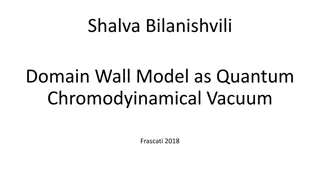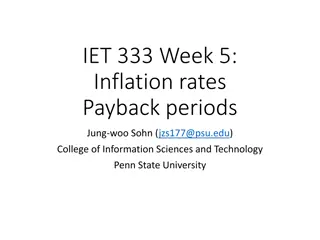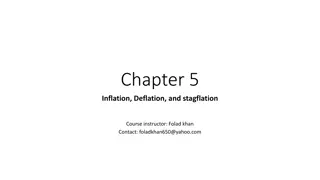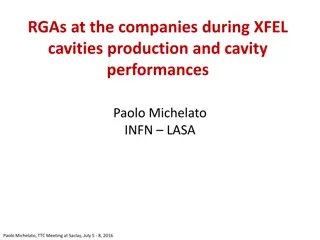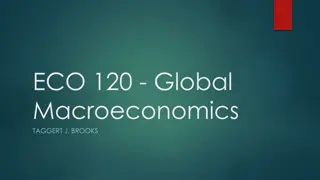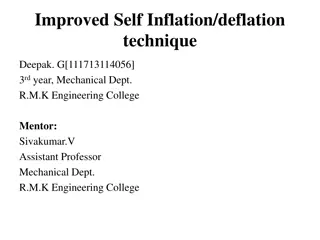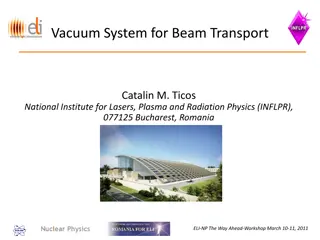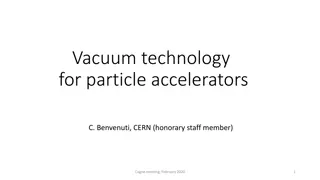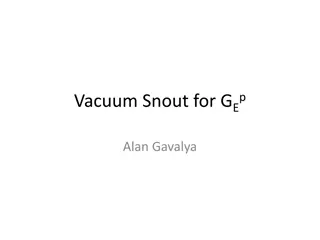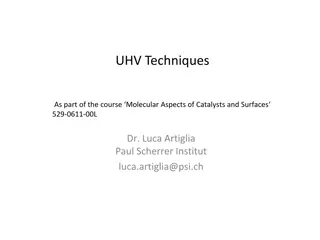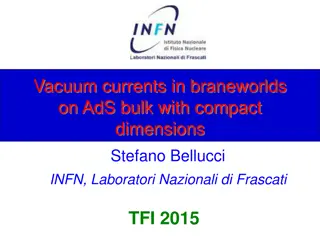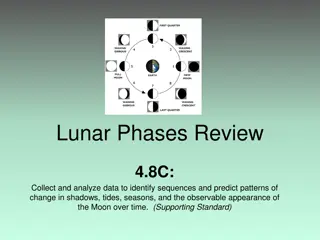Topological Phases of Eternal Inflation in Metastable Vacuum Theory
Exploring the coupling of gravity in a theory with metastable vacuum through the lens of topological phases of eternal inflation. Investigating the behavior of false and true vacua, de Sitter space, and bubble nucleation, offering insights into string theory landscapes and observational implications for our universe.
Download Presentation

Please find below an Image/Link to download the presentation.
The content on the website is provided AS IS for your information and personal use only. It may not be sold, licensed, or shared on other websites without obtaining consent from the author. Download presentation by click this link. If you encounter any issues during the download, it is possible that the publisher has removed the file from their server.
E N D
Presentation Transcript
Topological Phases of Eternal Inflation Yasuhiro Sekino Okayama Institute for Quantum Physics) w/ Stephen Shenker (Stanford), Leonard Susskind (Stanford), Phys. Rev. D81, 123515 (2010), arXiv:1003.1347[hep-th] 1
The problem addressed in this work: What happens when gravity is coupled to a theory with metastable vacuum? V( ) e.g. scalar field which has a false vacuum and a true vacuum V( F)>0, V( T)=0 F T If we ignore gravity, first order phase transition: Nucleation of bubbles of true vacuum (Callan, Coleman, ) The whole space eventually turns into true vacuum. 2
False vacuum: de Sitter space De Sitter space: hyperboloid in \begin{align*} ds^2=-dt^2+H^{-2}\cosh^2(Ht)d^2\Omega_3 \end{align*} Hubble parameter (expansion rate) \begin{align*} H^2={8\pi G\over 3} V(\phi_F) \end{align*} Causal structure: Two points separated by > H-1are causally disconnected. Inflation in false vacuum leads to a completely different picture than the case without gravity. 3
Motivation There is evidence that string theory has metastable de Sitter vacua. ( String Landscape ) But presently, we are not able to study physics in de Sitter by string theory. In this work we use semi-classical gravity, and try to understand the physics as much as we can. Goals: Construct a holographic dual formulation Find observational signature (our universe: true vacuum) 4
Bubble of true vacuum Described by Coleman-De Luccia instanton (Euclidean bounce solution). Euclidean geometry: Interpolates between true and false vacua Deformed S4 (Euclidean de Sitter is S4) Rotationally symmetric: SO(4) Nucleation rate: \begin{align*} \Gamma\sim e^{-(S_{\rm cl}-S_{\rm de Sitter})} \end{align*} Lorentzian geometry: given by analytic continuation 5
Lorentzian geometry: given by analytic continuation SO(3,1) symmetric Bubble wall is constantly accelerated. Spacetime: flat space and de Sitter patched across a domain wall. Open FRW universe (shaded region) inside the bubble. Spatial slice: H3 \begin{align*} ds^2\sim -dt^2+t^2(dR^2+\sinh^2 Rd\Omega^2) \end{align*} Beginning of FRW universe: non-singular (equivalent to Rindler horizon) 6
Eternal inflation A single bubble does not cover the whole space. (Fills only the horizon volume). Many bubbles will form in the de Sitter region with the rate (per unit physical 4-volume). (Bubble collisions are inevitable.) \begin{align*} \Gamma \end{align*} But if , bubble nucleation cannot catch up the expansion of space, and false vacuum exists forever ( Eternal Inflation ; Guth, Linde, Vilenkin, ). \begin{align*} \textcolor[rgb]{0.2,0.4,1}{\Gamma\ll H^{4}} \end{align*} 7
Outline There are three phases of eternal inflation, depending on the nucleation rate. Phases are characterized by the existence of percolating structures (lines, sheets) of bubbles in de Sitter space. (First proposed by Winitzki, 01.) The cosmology of the true vacuum region is qualitatively different in each phase. 8
View from the future infinity Consider conformal future of de Sitter. (future infinity in comoving coordinates) \begin{align*} ds^2\sim {-d\eta^2+d\overrightarrow{x}{}^2\over H^2\eta^2}\qquad (-\infty < \eta <0) \end{align*} A bubble: represented as a sphere cut out from de Sitter. Scale invariant distribution of bubbles Bubbles nucleated earlier: appear larger: radius rarer: volume of nucleation sites \begin{align*} \sim H^{-3}|\eta|^3 \end{align*} \begin{align*} \sim |\eta|^{-3} \end{align*} 9
Model for eternal inflation Mandelbrot model (Fractal percolation) Start from a white cell. (White: inflating, Black: non-inflating Cell: One horizon volume) Divide the cell into cells with half its linear size. (The space grows by a factor of 2. Time step: ) Paint each cell in black with probability P. (P ~ = nucleation rate per horizon volume: constant) Subdivide the surviving (white) cells, and paint cells in black w/ probability P. Repeat this infinite times. Picture of the 2D version \begin{align*} \textcolor[rgb]{1,0.4,0.4}{\Delta t=H^{-1}\ln 2} \end{align*} \begin{align*} \textcolor[rgb]{1,0.4,0.4}{\Gamma V_{\rm hor}\Delta t} \end{align*} 10
Mandelbrot model (Fractal percolation) Start from a white cell. (White: inflating, Black: non-inflating Cell: One horizon volume) Divide the cell into cells with half its linear size. (The space grows by a factor of 2. Time step: ) Paint each cell in black with probability P. (P ~ = nucleation rate per horizon volume: constant) Subdivide the surviving (white) cells, and paint cells in black w/ probability P. Repeat this infinite times. Picture of the 2D version \begin{align*} \textcolor[rgb]{1,0.4,0.4}{\Delta t=H^{-1}\ln 2} \end{align*} \begin{align*} \textcolor[rgb]{1,0.4,0.4}{\Gamma V_{\rm hor}\Delta t} \end{align*} 11
Mandelbrot model defines a fractal If P > 1 - (1/2)3=7/8, the whole space turns black, since (the rate of turning black) > (the rate of branching). (No eternal inflation) If P < 7/8, white region is a fractal. Non-zero fractal dimension dF(rate of growth of the cells): \begin{align*} N_{\rm cells}=2^{nd_{F}}, \quad d_{F}=3-|\log(1-P)|/\log 2 \\ (n:{\rm \# \ of\ steps}) \end{align*} Physical volume of de Sitter region grows. (Eternal inflation) [Fractals in eternal inflation: noted by Vilenkin, Winitzki, ..] 12
Three phases of eternal inflation From the result on the 3D Mandelbrot model [Chayes et al, Probability Theory and Related Fields 90 (1991) 291] In order of increasing P (or ), there are (white = inflating, black = non-inflating) Black island phase: Black regions form isolated clusters; percolating white sheets. Tubular phase: Both regions form tubular network; percolating black and white lines. White island phase: White regions are isolated; percolating black sheets. 13
Geometry of the true vacuum region Mandelbrot model: the picture of the de Sitter side. (de Sitter region outside the light cone of the nucleation site is not affected by the bubble.) To find the spacetime in the non-inflating region inside (the cluster of) bubbles, we need to understand the dynamics of bubble collisions. In the following, we study this using the intuition gained from simple examples of bubble collisions. 14
Black island phase (isolated cluster of bubbles) Small deformations of open FRW universe. Basic fact: A collision of two bubbles (of the same vacuum) does not destroy the bubble [c.f. Bousso, Freivogel, Yang, 07] Spatial geometry approaches smooth H3at late time. Residual symmetry SO(2,1): spatial slice has H2factor Negative curvature makes the space expand. 15
Collision of two bubbles De Sitter space: hyperboloid in One bubble: plane at Second bubble: plane at Residual sym: SO(2,1) \begin{align*} X_3={\rm const.}=\sqrt{\ell^2 -r_0^2} \end{align*} Parametrization of de Sitter w/ manifest factor :
Parametrization of flat space: Profile of domain wall in (t, z) space ( is attached) flat flat dS dS dS Energy on the domain wall decays at late time The spatial geometry approach smooth H3
Tubular phase (tube-like structure of bubbles) In the late time limit: spatial slice is a negatively curved space whose boundary has infinite genus. \begin{align*} ds^2=-dt^2+t^2ds^2_{H/\Gamma} \end{align*} Late time geometry: Negatively curved space with non-trivial boundary topology: H3modded out by discrete elements of isometry Boundary genus = # of elements \begin{align*} ds_{H^3}^2={dx^2+dy^2+dz^2\over z^2} \end{align*} \begin{align*} (x,y,z)\sim \lambda (x,y,z) \end{align*} Genus 1 case 18
Simpler example: true vacuum with toroidal boundary [Bousso, Freivogel, YS, Shenker, Susskind, Yang, Yeh, 08] Ring-like initial configuration of bubbles (with the hole larger than horizon size) Solve a sequence of junction conditions 3 3 3 3 2 2 2 2 2 1 1 1 1 0 0 0 Approaches flat spacetime at late time. (Negatively curved spatial slice with toroidal boundary) 19
White island phase (isolated inflating region) An observer in the black region is surrounded by the white region (contrary to the intuition from Mandelbrot model). Simple case: two white islands (with S2symmetry) [Kodama et al 82, BFSSSYY 08] Global slicing (S3) of de Sitter Penrose diagram An observer can see only one boundary; the other boundary is behind the black hole horizon. [c.f. non-traversability of a wormhole , topological censorship ] 20
In the white island phase, a white region will split. Late time geometry for the three white island case: [Kodama et al 82] W W W Singularity and horizons will form so that the boundaries are causally disconnected from each other. 21
From the Mandelbrot model: A single white island is of order Hubble size (due to frequent bubble nucleation) The boundary moves away from a given observer, but its area remains finite. (Effectively a closed universe) Black hole in the bulk. This universe will eventually collapse. Simpler model: Shells of bubbles constantly colliding to a given bubble Any given observer in the true vacuum will end up at singularity. 22
Summary Three phases of eternal inflation and their cosmology: Black island phase: Small deformation of an open FRW Tubular phase: Negatively curved space with an infinite genus boundary White island: Observer sees one boundary and one or more black hole horizons (behind which there are other boundaries). 23
Future directions The case with more than two vacua (False, Intermediate, True): Bubbles inside bubbles, percolation on hyperboloid Interpretation in terms of FRW/CFT correspondence (holographic dual defined at the boundary of H3) [Freivogel, YS, Susskind, Yeh, 06] Observational signature of each phase (True vacuum is our vacuum, assuming there is slow-roll inflation after tunneling) 24
FRW/CFT correspondence Proposal for holographic duality for open universe created by bubble nucleation. Dual theory: CFT on S2at the boundary of H3 SO(3,1) : 2D conformal sym Dual theory has 2 less dimension than the bulk Time: Represented by Liouville field (scale factor of 2D gravity) Defined in the region a single observer can see (different from dS/CFT correspondence) 25
From correlation functions: Gravity is not decoupled at the boundary Energy momentum tensor has dim. 2. One bulk field correspond to a tower of CFT operators (roughly speaking, KK reduction) Central charge: of order de Sitter entropy Three point function: under study Implication of this work: We have to sum over topology of 2D space, but do not have to consider multiple boundaries. (Phase transitions: instability of 2D gravity?) 26



